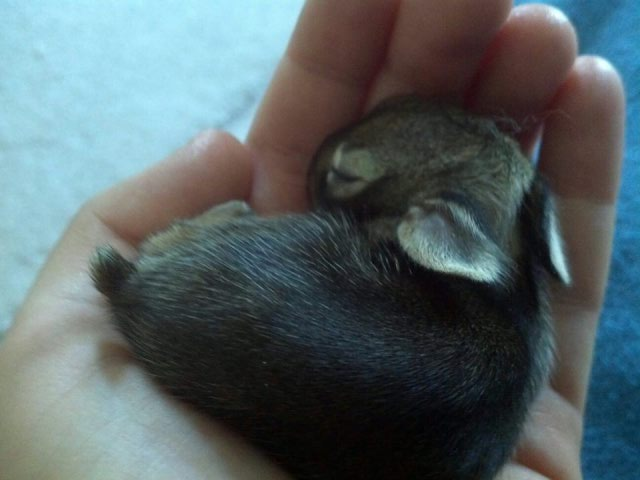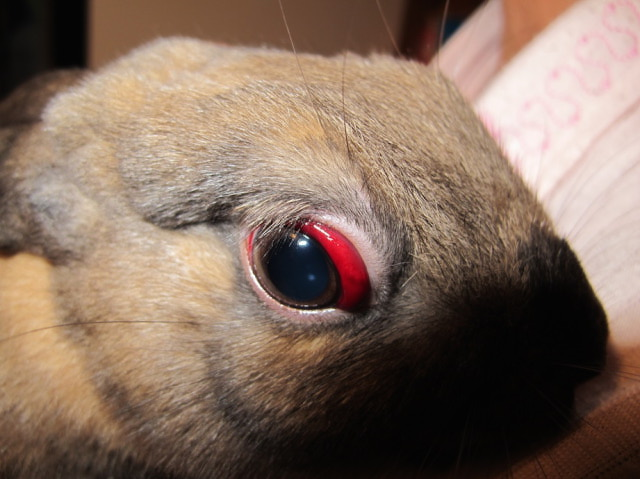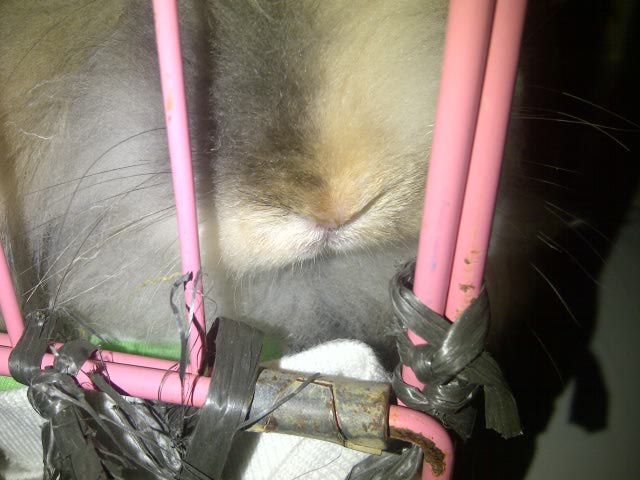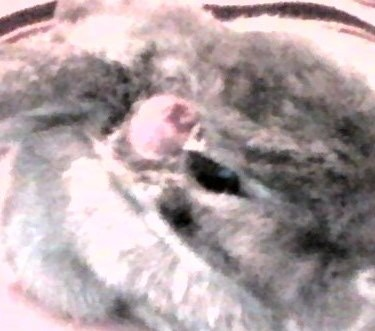QuestionMy eight year old male lop (Bob) has recently developed a "runny" eye. The secretion is keeping the area below his eye wet and has given a yellow hue to the insides of his front paws from cleaning. I'm not sure if this is also a result of the weeping eye, but he has begun to lick under his neck to the point of going bald. The skin is more pink than red but has a whitish (fine)scaling over it. I've tried to cut away the hunks of matted hair (I don't know if its matting from the secretion or his licking). He once before licked his fur off of the front of one foreleg but quit on his own and the fur grew back just fine. His appetite is good and he's very feisty, he just looks pitiful! I haven't been able to find a rabbit vet locally and when I call my regular vet (also have a cat and dog) they are very vague with answers concerning Bob. He was neutered at about a year old and has had no health problems so far. Also I've seen no sign of mites or other critters on him. Any help or advice would be greatly appreciated!!
Sheila
AnswerDear Sheila,
In an eight year old lop with a runny eye, the very first culprit I suspect is a molar root problem. You can read about this here:
www.bio.miami.edu/hare/sneezing.html
and here:
www.bio.miami.edu/hare/dental.html
I would try to get Bob to a good rabbit vet asap to have him checked for molar spurs. He might have a blocked tear duct which could be cleared with a flush and/or the appropriate eye drops. But this could be chronic, if there is a molar root impinging on his tear duct, causing it to narrow.
You can find a good vet here:
www.rabbit.org/vets
For the time being, it will help if you apply warm, wet compresses to the affected eye to help keep the skin clean and free of caustic tears. The warmth also sometimes helps clear the duct of cellular debris, and can help resolve the runny eye problem.
If you see flakiness or crust around the eyes, then this could be the early signs of mange. You can read more about this, including treatment, here:
www.bio.miami.edu/hare/furloss.html
I hope this helps.
Dana

 Wild baby rabbit; questions and concerns
Question
Tiny
Hello Dana, yesterday I was walkin
Wild baby rabbit; questions and concerns
Question
Tiny
Hello Dana, yesterday I was walkin
 Bloody eyes dwarf rabbit
Question
Jasmin1 Jasmin2
Hello, doctor,
I
Bloody eyes dwarf rabbit
Question
Jasmin1 Jasmin2
Hello, doctor,
I
 Lump at the Base of Tail
Question
Laytons Tail
While grooming my rabbit,
Lump at the Base of Tail
Question
Laytons Tail
While grooming my rabbit,
 bunny sometimes sneezing
Question
zoes nose
Dear dana,
2weeks ago I just
bunny sometimes sneezing
Question
zoes nose
Dear dana,
2weeks ago I just
 Lump on Bunny
Question
Marys Lump Marys Lump
My 3 yr old
Lump on Bunny
Question
Marys Lump Marys Lump
My 3 yr old